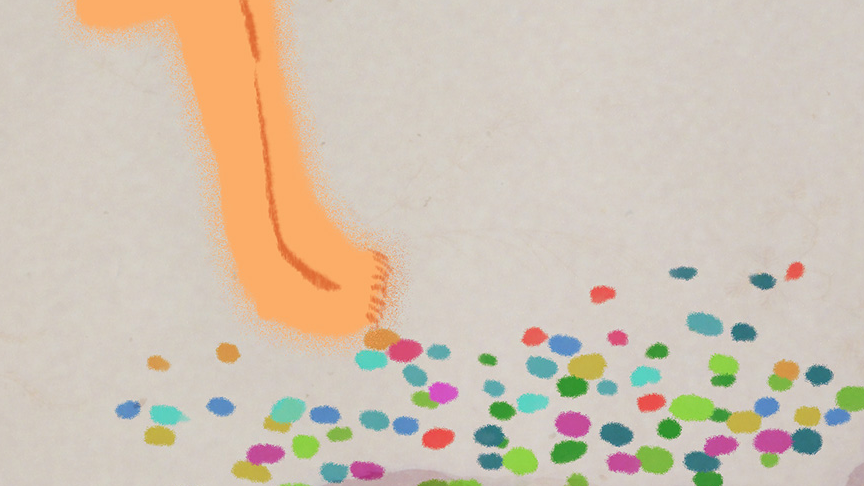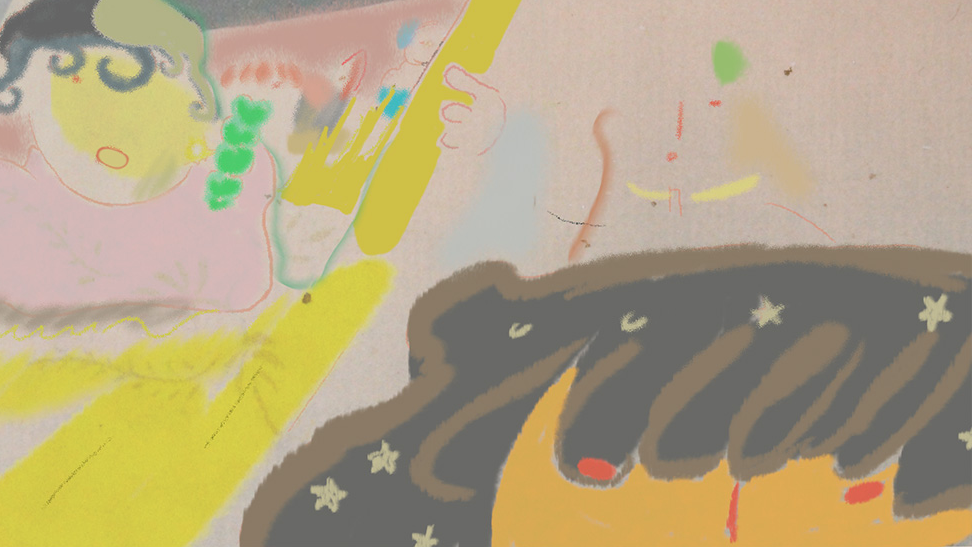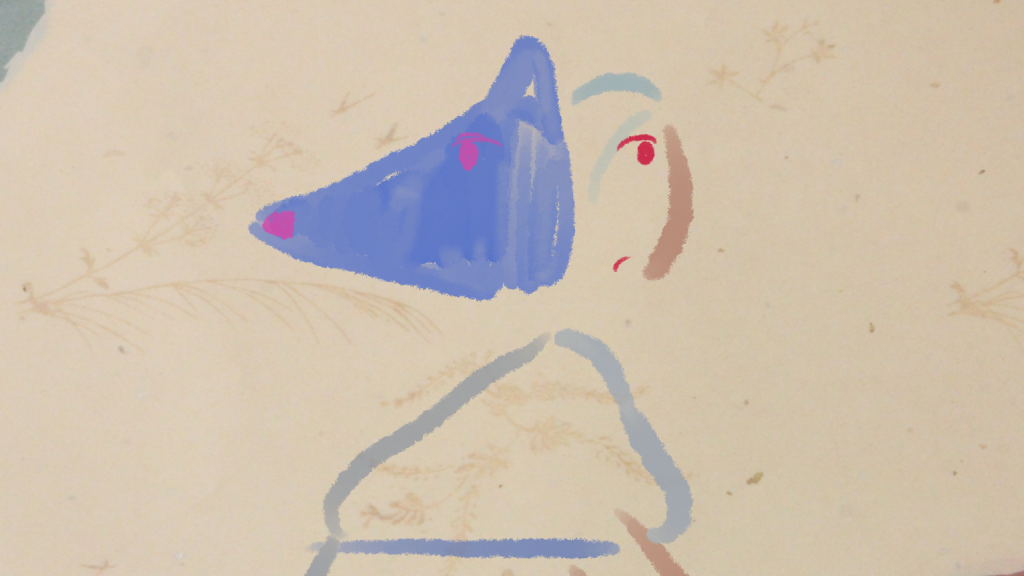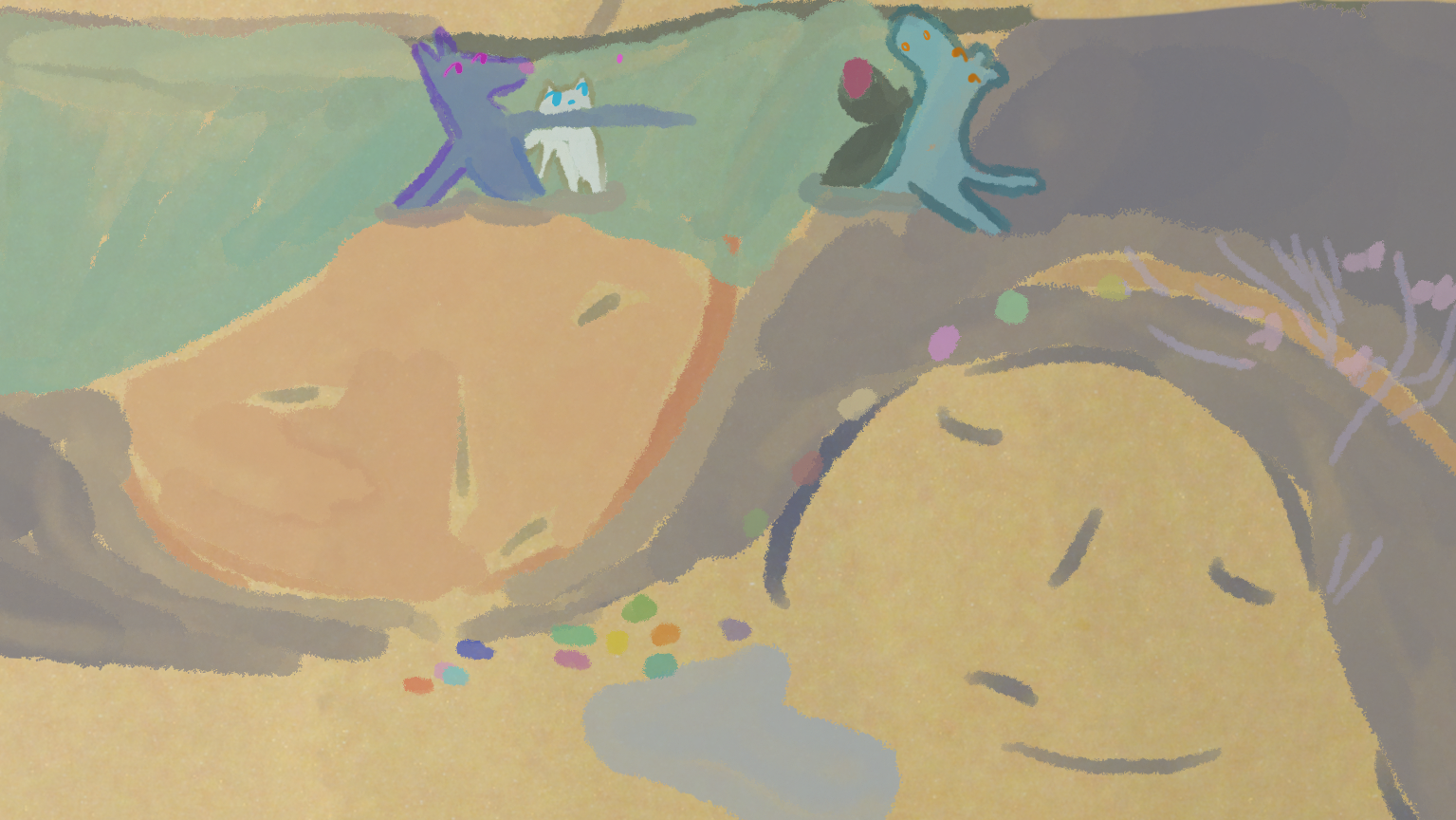I don’t live in London so I wasn’t around to catch Yaya Wang’s animation ‘into the next tide’ as part of the Bold Melon Queer Migrations exhibition at Firepit earlier this month. But I’m watching it now via an unlisted YouTube link, which I prefer anyway. It always feels like someone with two hands cupped around an ear ready to whisper you a long secret. I don’t normally like seeing art online, because it’s like spoiling a meal, but animation is the exception. Good animation is an oasis between the graphic, flashing space of the Internet. It’s a clearing. Soft touch, a lower volume. It means that when I press play, and the waterfall of heavy August rain streaming down the window next to me dims the room like a curtain, I am ready to wander into Wang’s oasis.
I watch a body floating across water, arms out, sleeping or waiting for something. The body is drawn in a loose outline that twitches as it bobs up and down. Painted washes of blue and teal flicker the way water does. Light sparkles, a push of foam. The main character washes up on a shoreline where a small group of musicians stop playing to save their body from floating back out. The outlines of the musicians quiver too. The tide pokes in and out. In fact, everything is moving, constantly, even the yellow and beige of the beach which is animated like the speckle of sugar paper; like the crackle of dust over film footage; like sand whipped off the beach, blowing in your eyes.

I wonder what that nervous quality in the animation is about until handwritten text on screen reads, ‘I grieve in the colours of the ocean,’ and I remember the wider context for the exhibition I didn’t get to see. This film was shown at Bold Melon Collective’s Queer Migrations Festival, which explores “how bodies, identities, and stories move across borders, seas and generations… often in search of safety, freedom or belonging.” I don’t know where the castaway has come from. I don’t know where they are floating to next, or how much of that movement is in their control. I wonder about the grief they carry, and it makes me notice the outlines of all those characters again.
Because what happens next is: the character holds a sea urchin that glows like a star, and shells roll in open palms, and they seem to fly, and melt, and rest, buried under sand, becoming a part of the landscape. They join the family of the beach musicians. Eventually, they enter the water again. Sit across a table from a creature that looks like a jackal. They push and pull against one another, same height, dancing, lying side by side in the small world of a rock pool. And I don’t know if the jackal is who the main character used to be, or someone they used to know, or if this is the manifestation of grief emerging from the darker colours of the ocean —

But all the while, these bodies slip in and out of focus, getting overtaken by colour and then totally released from it. I never quite get a grip on the characters I am witnessing. It is as though the main character becomes someone, and then un-becomes them, becoming someone else instead. I guess the character is constantly being redrawn because they are in a state of change, the way everything in this film is constantly moving like it is standing on its toes. As the film closes in on itself, I think: identity is always shifting too. We move towards ourselves and who we are truly becoming. In this respect, Wang’s into the next tide is like a child of Dreamfeel’s 2020 video game If Found — a story about going home and coming out as trans — where line work really holds character.

And I say all that but something like grief lingers over me and I think: I can tell myself we are always getting closer to becoming ourselves but I know the opposite can be just as true. That push and pull with the jackal. I wonder sometimes if I am not supposed to live where my last name makes sense; if I am not supposed to be writing these words in another language. I don’t know for sure, but I think the film is stuck on these questions too; in the copy, French artist Wang dedicates the film to the queer, East and South-East Asian communities in London who have offered them a new home.
The piece leaves me with thoughts that slip in and out, no defined edges, like heat on the horizon, or water disappearing into sand. I heard a rumour it was exhibited with seashells you could rattle in your hands. I can’t feel them now, but I feel so many other things inside this small oasis while it lasts.
into the next tide was shown from July 9th – August 9th across Royal Museums Greenwich, Firepit Art Gallery and PARKSfest 2025
Stay in touch. Subscribe to Skin Deep’s monthly newsletter.
